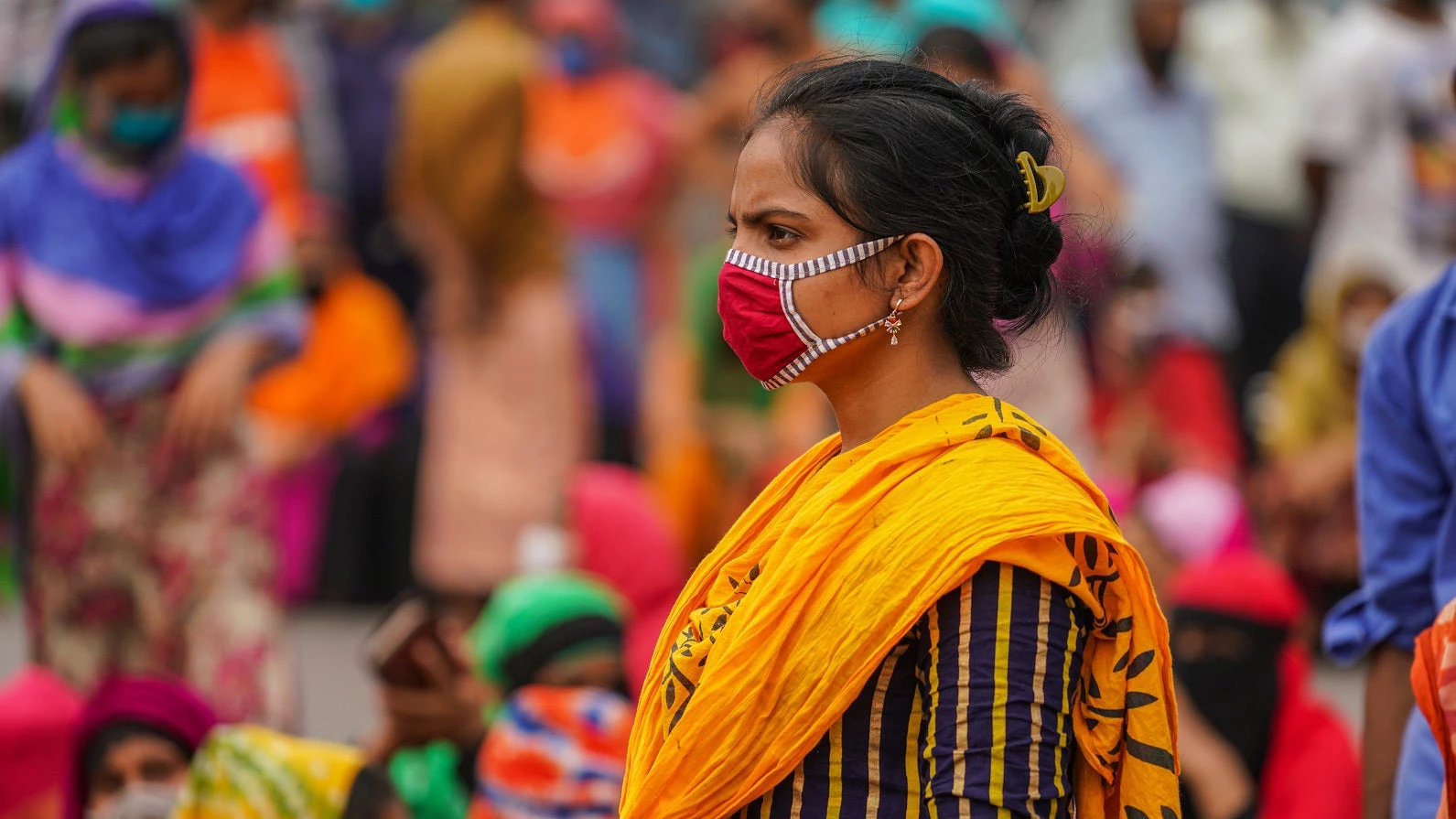 Manifestation d'ouvriers du textile réclament leurs salaires impayés durant la pandémie de COVID-19 à Dhaka au Bangladesh. Photo: © Zabed Hasnain Chowdhury / Shutterstock
Manifestation d'ouvriers du textile réclament leurs salaires impayés durant la pandémie de COVID-19 à Dhaka au Bangladesh. Photo: © Zabed Hasnain Chowdhury / Shutterstock
The coronavirus (COVID-19) pandemic has resulted in a collapse of global economic activity. Despite unprecedented economic stimulus measures being taken by governments in advanced and many developing economies, the 2020 pandemic-fueled global recession is expected to be the deepest since World War II.
In our latest economic forecasts, released in the Global Economic Prospects report, we expect the global economy to contract by 5.2% this year.
Advanced economies will see economic activity shrink by 7% this year due to severe disruptions in domestic demand and supply, trade, and finance. Emerging market and developing economies (EMDEs) are expected to shrink by 2.5% in 2020, their first contraction as a group in at least 60 years. As a result, per capita incomes are expected to decline by 3.6%, which will tip millions of people into extreme poverty this year.
The 2020 pandemic-fueled global recession is expected to be the deepest since World War II.
If the pandemic is contained sufficiently by mid-year in advanced economies and a bit later in EMDEs, we anticipate the global economy to rebound to 4.2% in 2021, with advanced economies growing by 3.9% and EMDEs by 4.6%.
But the outlook remains highly uncertain as the downside risks are predominant, including a protracted pandemic, financial upheaval, and retreat from global trade and supply linkages.
As they grapple with a severe public health crisis, many EMDEs are less prepared to weather a global downturn than they were during the global financial crisis. Particularly vulnerable EMDEs include those with weak health systems, a dependence on commodity exports, and elevated levels of sovereign and corporate debt.
In the short term, the urgent need in EMDEs is for health and economic policy action to cushion the impact of the pandemic, protect vulnerable populations, and improve countries’ capacity to prevent and cope with similar events in the future. Since EMDEs are particularly vulnerable, it is critical to strengthen their public health care systems, to address the challenges posed by informality and limited safety nets, and, once the health crisis abates, to undertake reforms that enable strong and sustainable growth.
Policymakers can encourage investment in productivity-enhancing technologies by creating efficient business climates, strong governance, and streamlined and enforced regulations.
But short-term policy actions have to be complemented by long-term measures. Boosting labor productivity and potential output are the ultimate foundations of lasting prosperity gains and poverty reduction. Policymakers can encourage investment in productivity-enhancing technologies by creating efficient business climates, strong governance, and streamlined and enforced regulations. And, of course, boosting human capital with better education that is focused on learning outcomes.
Downside scenario
In the event COVID-19 outbreaks persist longer than expected, restrictions on movement and interactions may have to be maintained or reintroduced. In a scenario where an additional three months of stringent lockdown measures are required, global output would shrink by almost 8 percent in 2020. Despite additional fiscal policy support, vulnerable firms would exit, vulnerable households would sharply curtail consumption, and travel would remain deeply depressed. These disruptions would also magnify the size of cross-border spillovers and lead to widespread interruptions in production. Persistent and severe financial market turmoil would cause a notable spike in bankruptcies worldwide and trigger serious bouts of financial distress in many EMDEs.
Upside scenario
Despite the heightened downside risks to global growth forecasts, and the increasingly apparent severity of the ongoing global contraction, a stronger outcome remains possible. The predictable removal of pandemic-control measures, coupled with the rapid and unprecedented global policy response can trigger a rapid recovery in confidence and employment, unleashing pent-up demand. However, even with these positive developments, the contraction in global output of 3.7 percent in 2020 would still be about twice as deep as during the global recession of 2009, and EMDE growth would be negative.
RELATED
The World Bank Group and COVID-19


Join the Conversation